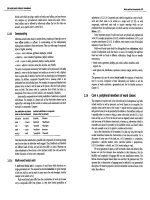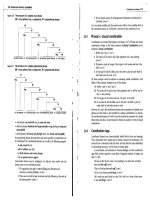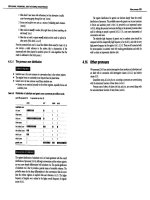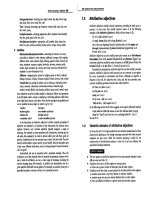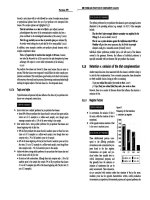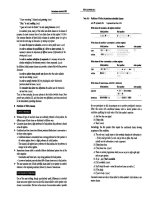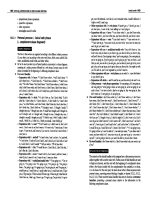Cultivation of soya and other legumes - Part 1 ppsx
Bạn đang xem bản rút gọn của tài liệu. Xem và tải ngay bản đầy đủ của tài liệu tại đây (151.4 KB, 9 trang )
Agrodok 10
Cultivation of soya and
other legumes
Rienke Nieuwenhuis
Joke Nieuwelink
© Agromisa Foundation, Wageningen, 2005.
A
ll rights reserved. No part of this book may be reproduced in any form, by print, photocopy,
microfilm or any other means, without written permission from the publisher.
First edition: 2002
Second edition: 2005
A
uthors: Rienke Nieuwenhuis, Joke Nieuwelink
Editors: Rienke Nieuwenhuis, Marten Voogd
Illustrators: Barbera Oranje, Mamadi B. Jabbi
Design: Ien Ko
Translation: Sara van Otterloo-Butler
Printed by: Digigrafi, Wageningen, The Netherlands
ISBN: 90-8573-011-2
NUGI: 835
Foreword 3
Foreword
This Agrodok is based on a previous shorter edition, Soya. The text
has been extended to include more practical information on growing
and processing soya and other legumes into nutritious food products.
We have included other legumes so that the information in the book
will be useful in more areas.
Soya is a legume with many good qualities, and it can be used to im-
prove farming systems. It can also be processed into products that
contribute to the daily diet and to family income. In this new edition
we devote extra attention to this crop. There are also many areas how-
ever where soya cannot be cultivated, but other legumes do grow well
and have many of the same good qualities.
This Agrodok is intended to help farmers and extension workers to
make choices that will work well under local conditions.
Cultivation of soya and other legumes 4
Contents
1 Introduction 6
2 The importance of legumes 7
2.1 Legumes 7
2.2 Soya 9
3 Cultivation requirements for legumes 10
3.1 Suitable areas 10
3.2 Climate 13
3.3 Varieties and cultivars 16
3.4 Soil 18
4 Integrating legumes into existing farming systems 21
4.1 Livestock keeping 23
4.2 Mixed/rotational cropping systems in Asia 24
4.3 Mixed/rotational cropping systems in africa 25
4.4 Labour requirements 26
5 Cultivating soya 27
5.1 Storage of beans and seed selection 27
5.2 Nitrogen fixation 28
5.3 Plant density and sowing methods 30
5.4 Sowing period 32
5.5 No-tillage cropping 33
5.6 Weed control 33
5.7 Pests 34
5.8 Diseases 35
5.9 Harvesting legumes 35
5.10 Large-scale production in South America 36
6 Soya: nutritious food 37
6.1 What is good nutrition? 37
6.2 Malnutrition 40
Contents 5
6.3 Soya and other legumes 43
7 Soya in the daily diet 46
7.1 Good storage 46
7.2 Heat first! 46
7.3 Preparation of meals and products 47
8 Recipes 53
8.1 Snacks 53
8.2 Main courses 54
8.3 Bread and baking 56
8.4 Other recipes 57
9 Introducing soya at the local level 59
Appendix 1: Legumes 60
Appendix 2: Inoculating soya with rhizobium 62
Appendix 3: Giving advice on inoculation 66
Further reading 68
Cultivation of soya and other legumes 6
1 Introduction
Many farmers face urgent problems of making sure there is enough
food for their families for the whole year and earning sufficient in-
come. Population growth and the increasing size of cities and towns
mean that the amount of land available to grow food for each family is
decreasing. Yields are not always high and the prices of agricultural
products are generally declining. The amount of money available to
buy food if it cannot be grown, to provide housing, travel and medical
costs is also decreasing. The costs of agriculture are rising; artificial
fertilizers and other chemicals are becoming more expensive, while
farmers are not able to increase the prices of their products. There is a
shortage of food both in terms of quantity, but also quality: the amount
of nutrients in food that children need to grow and adults to stay
strong and healthy is often too low.
By growing legumes farmers can do something about these problems.
Legumes take up nitrogen from the air and pass it on to the soil,
thereby improving soil fertility. The yields of crops grown on the same
land after the legume crop will increase. In addition legumes are nutri-
tious, and may provide income opportunities. Products made from
soya and other legumes can be eaten or sold.
This Agrodok is intended for farmers who want to know more about
legumes and for extension workers who want to assist the farmers.
The answers to the following questions can be found in this book:
? What are legumes?
? How can I cultivate them?
? What products can be made from soya and other legumes?
The importance of legumes 7
2 The importance of legumes
Plants that belong to the legume family (Leguminosae) have pods in
which beans grow. Legumes possess an important characteristic,
which is their ability to absorb nitrogen from the air. Many crops that
are unable to do this are dependent on the nitrogen that is present in
the soil. Most soils in tropical areas do not contain sufficient nitrogen,
an important nutrient. For this reason growing legumes (in addition to
other staple crops such as potatoes, maize and rice) is a good way for
farmers in tropical areas to enrich the soil. The legume crops also pro-
vide extra food for the daily diet of both humans and animals.
The nitrogen that the legume crop absorbs from the air is used for its
own growth and is stored in the root nodules. When the crop is har-
vested the roots are left in the ground, where they decompose, releas-
ing the nitrogen into the soil. This nitrogen can then be used by the
next crop that is planted in the same field. The pods contain beans that
are easy to prepare. Legumes must never be eaten raw. Nevertheless
they have so many advantages that it is worthwhile growing and proc-
essing them. Soya is a legume that is very rich in nutrients and there
are a number of products that can only be made from soya. Soya beans
and soya products can also be sold and can therefore be a source of
extra income. This Agrodok about legumes focuses on soya for these
reasons.
2.1 Legumes
Legume crops provide dried beans for human consumption and are
grown all over the world (see table 1). Some beans are a good source
of oil (groundnuts and soya beans), others are good for cooking, either
as whole beans or pulses or as split beans or peas. Some beans are
ground into flour, which is used to prepare a number of foods. After
the beans have been harvested the crop remains make a good source of
animal feed. They can also be dug into the soil so that they improve
the fertility of the soil. Some legume crops can be grown in combina-
Cultivation of soya and other legumes 8
tion with a grain crop, which helps to increase yields and soil fertility.
Cowpeas are often grown together with millet or maize (Agrodok 2:
Soil Fertility Management).
Table 1: Worldwide production of legumes as dried beans: peas,
lima beans, cowpea, chick pea etc. (Source: ACIAR Proceedings
no.18, 1986)
Continent/country Production (1000 ton) Yield (kg/ha)
Africa 7026 646
Ivory Coast 8 672
Tanzania 362 539
Zaire 127 634
Zimbabwe 51 734
America 6847 644
Argentina 273 1020
Mexico 1331 648
Paraguay 39 713
Asia 24551 688
China 5640 1276
India 12985 544
Indonesia 354 829
Europe 5294 1632
World 55200 807
Uses of legume crops
crop
? combine with other crops to improve soil fertility
? green manure
? ground cover
crop remains
? animal feed
? worked into the soil to improve soil fertility
beans
? important source of vegetable oil
? cooked or eaten as pulses and split peas
? ground into flour for cooking
The importance of legumes 9
There are other legume crops that are especially suitable for green
manure. The crop is sown and when it is fully grown it is ploughed
under without being harvested. However, because these crops do not
have direct economic returns it is more difficult to motivate farmers to
use these. Finally there are legumes that make good ground cover.
These are sown between the rows of a crop that does not cover the
soil, such as maize (Agrodok 2: Soil Fertility Management).
2.2 Soya
Table 2 below indicates that soya is grown in many areas of the world:
in North and South America and in Europe agricultural production is
mechanized, in Asia production is small scale and largely done by
hand. Soya has only recently been introduced in Africa, while it has
been grown and processed for many centuries throughout Asia.
In Bolivia in South America, soya is grown for oil that is processed
industrially. Bolivian soya oil was first sold on the world market in
1985, and since then production has increased considerably. The total
area in Bolivia planted with soya increased from 60,000 hectares to
330,000 hectares in the summer of 1994 – 1995.
Table 2: Worldwide cultivation of soya by region in 1996 (Source:
Meneses et al., 1996)
Region (country) Hectares (1000 ha) Yield (kg/ hectare)
Worldwide 57778 1920
Africa (Nigeria) 401 1270
Asia (China, India) 15439 1340
Europe (Italy) 547 2840
North America 23837 2170
South America 16787 2140


